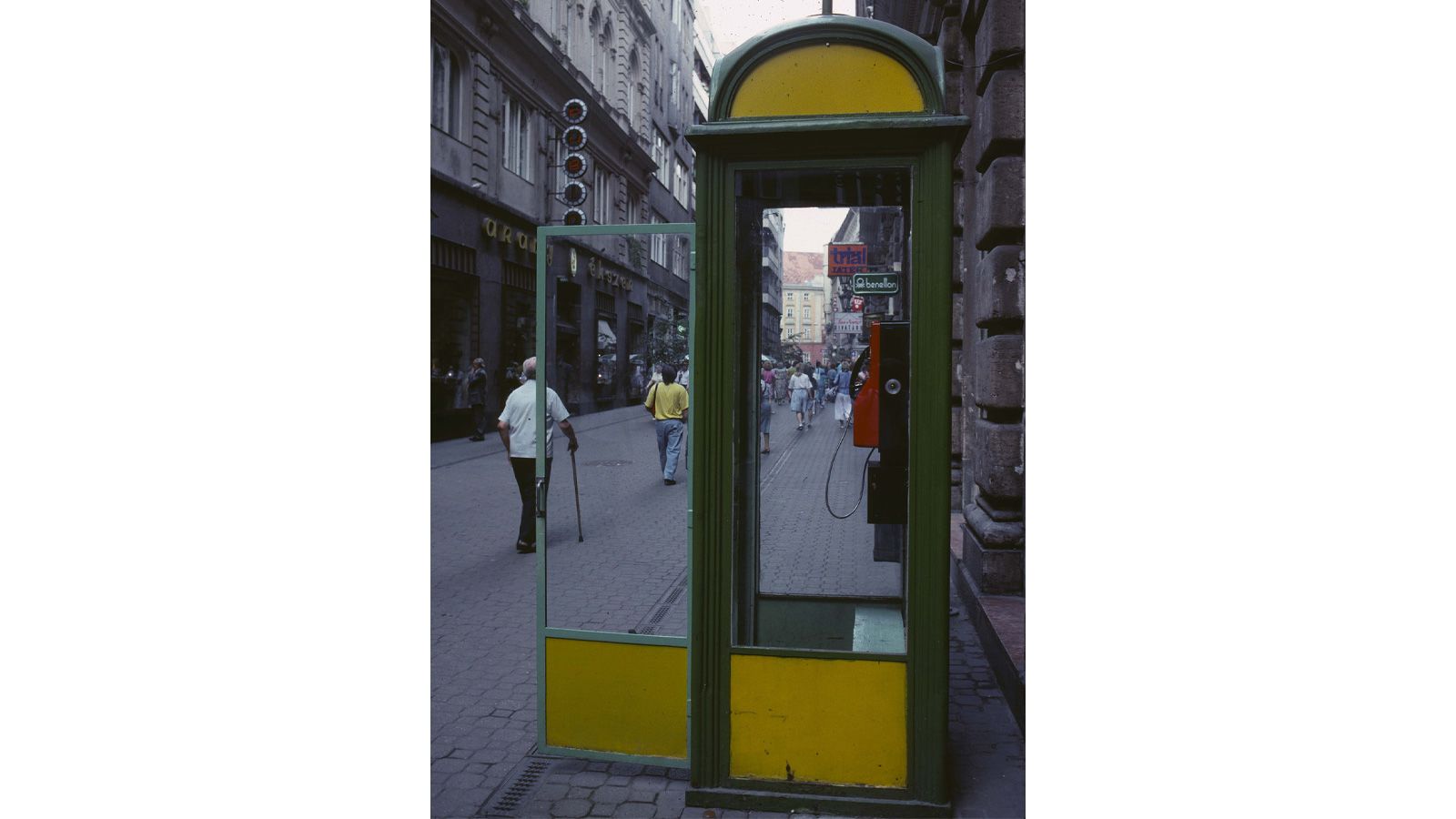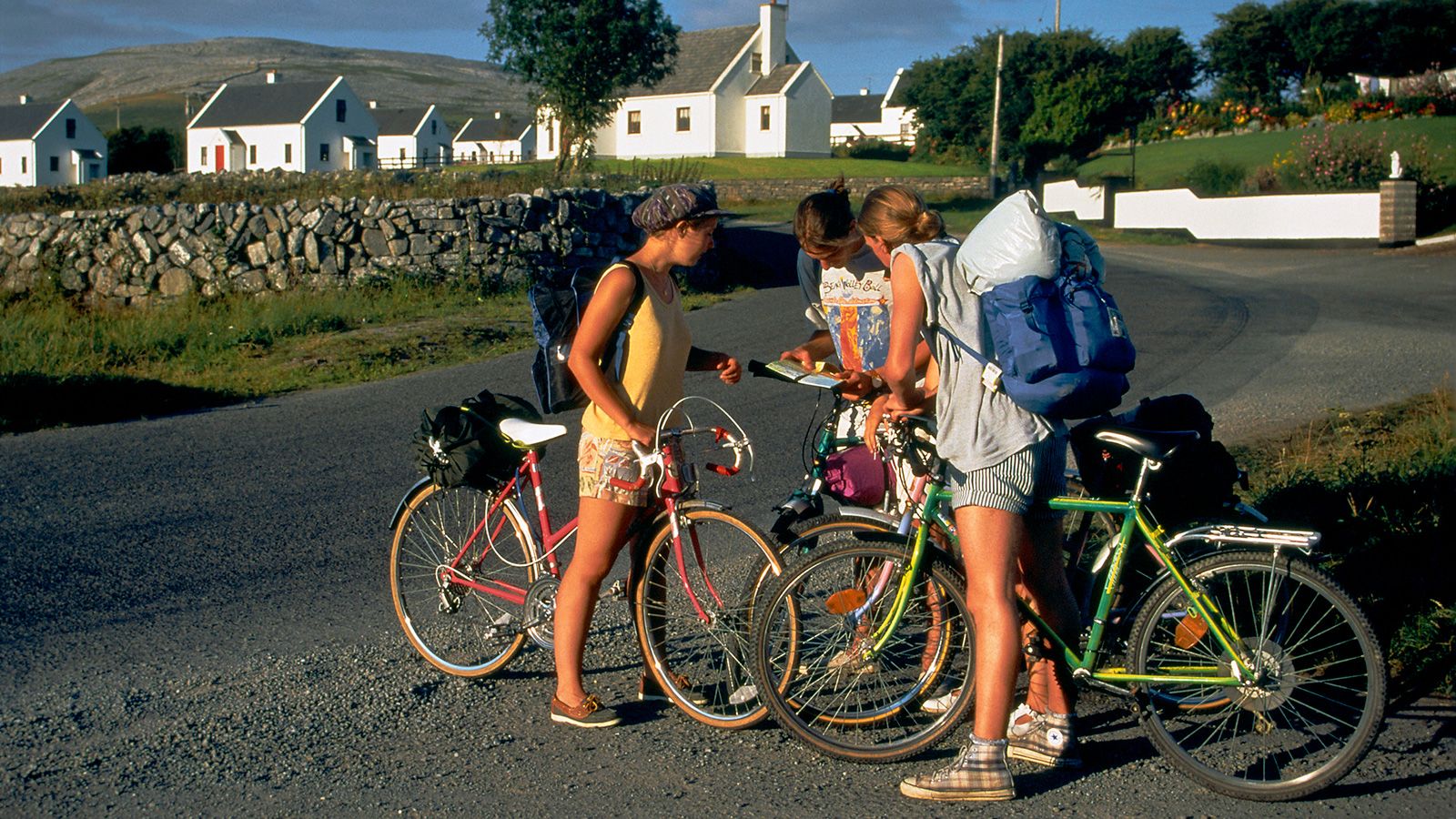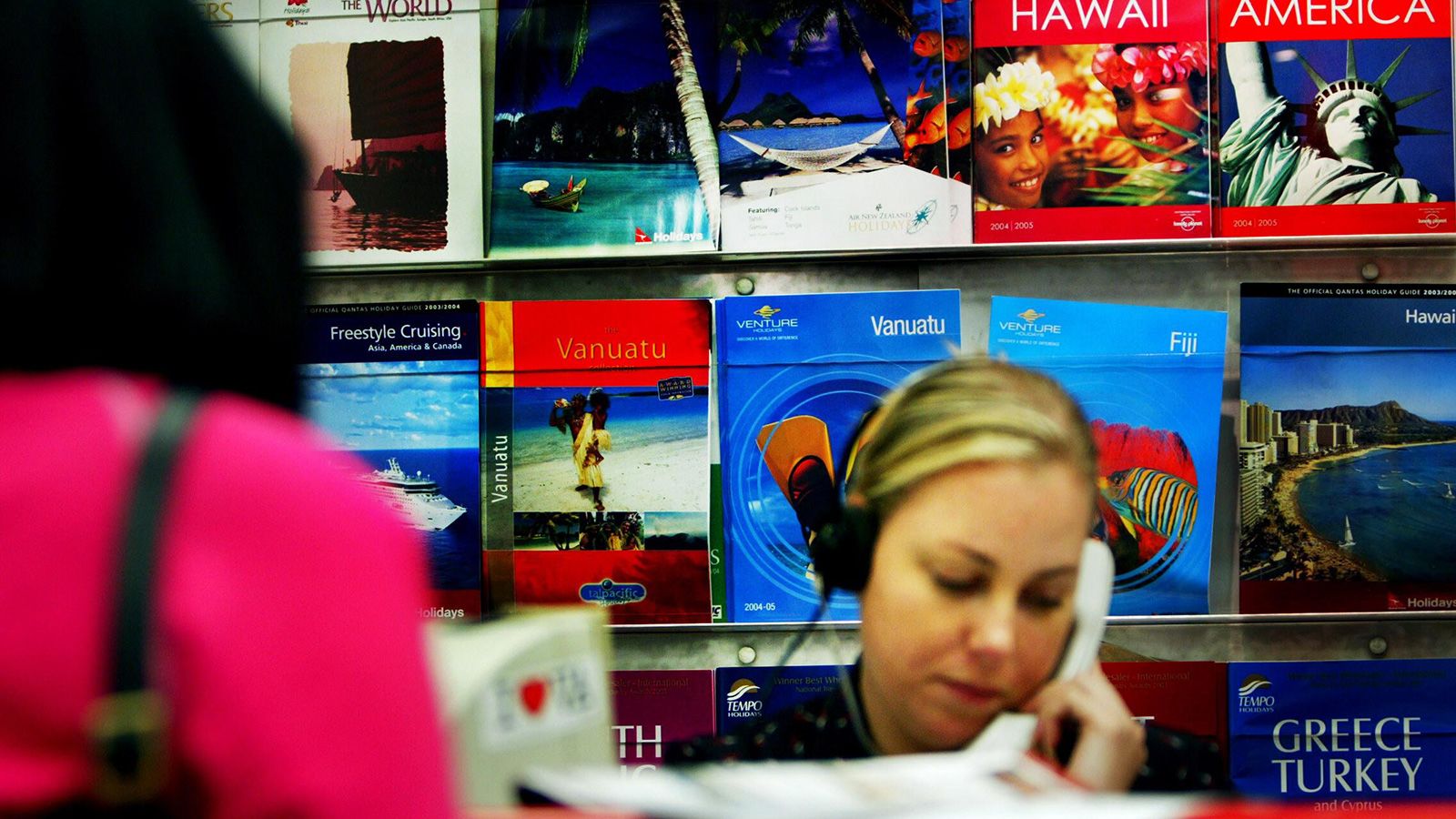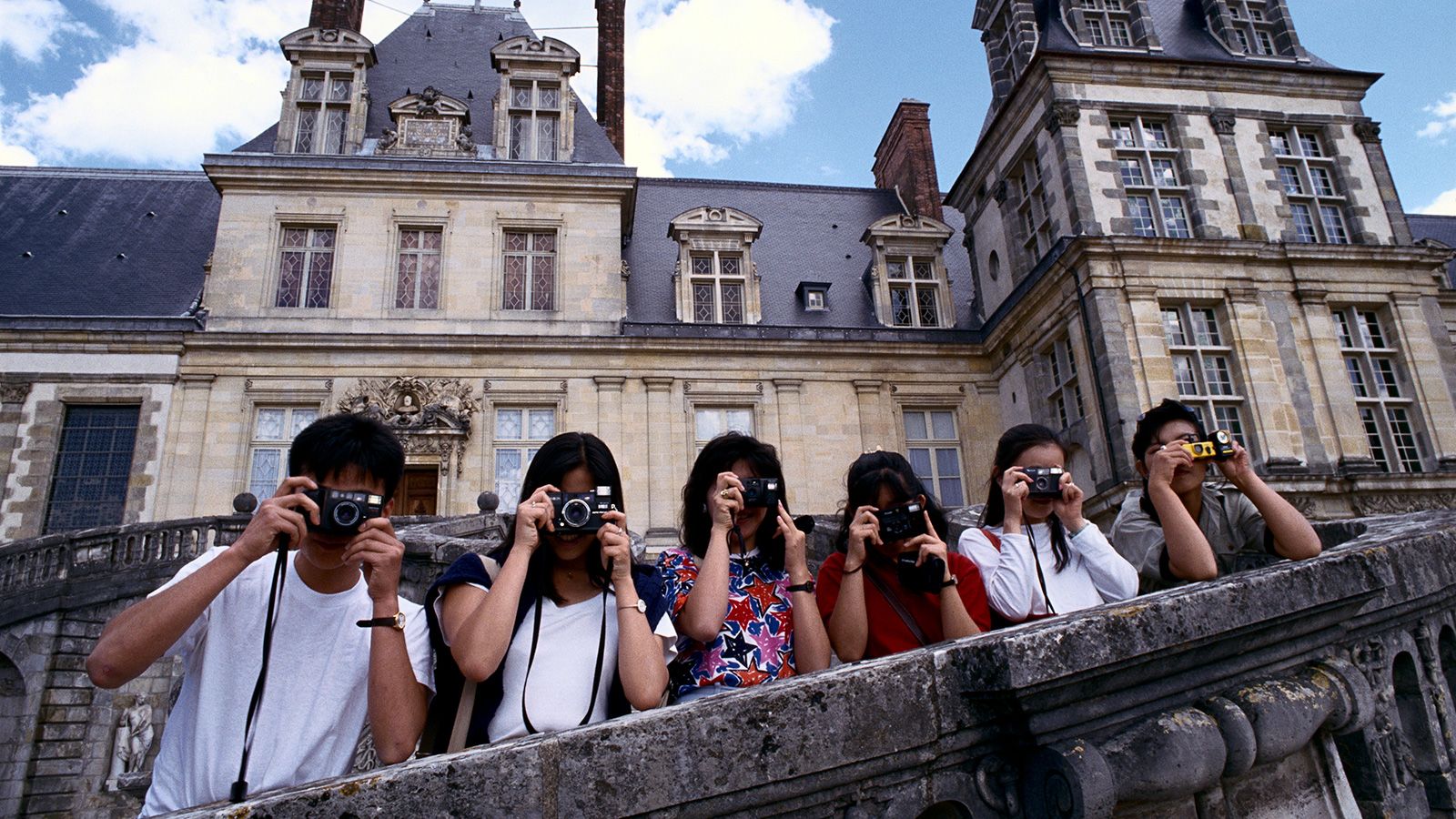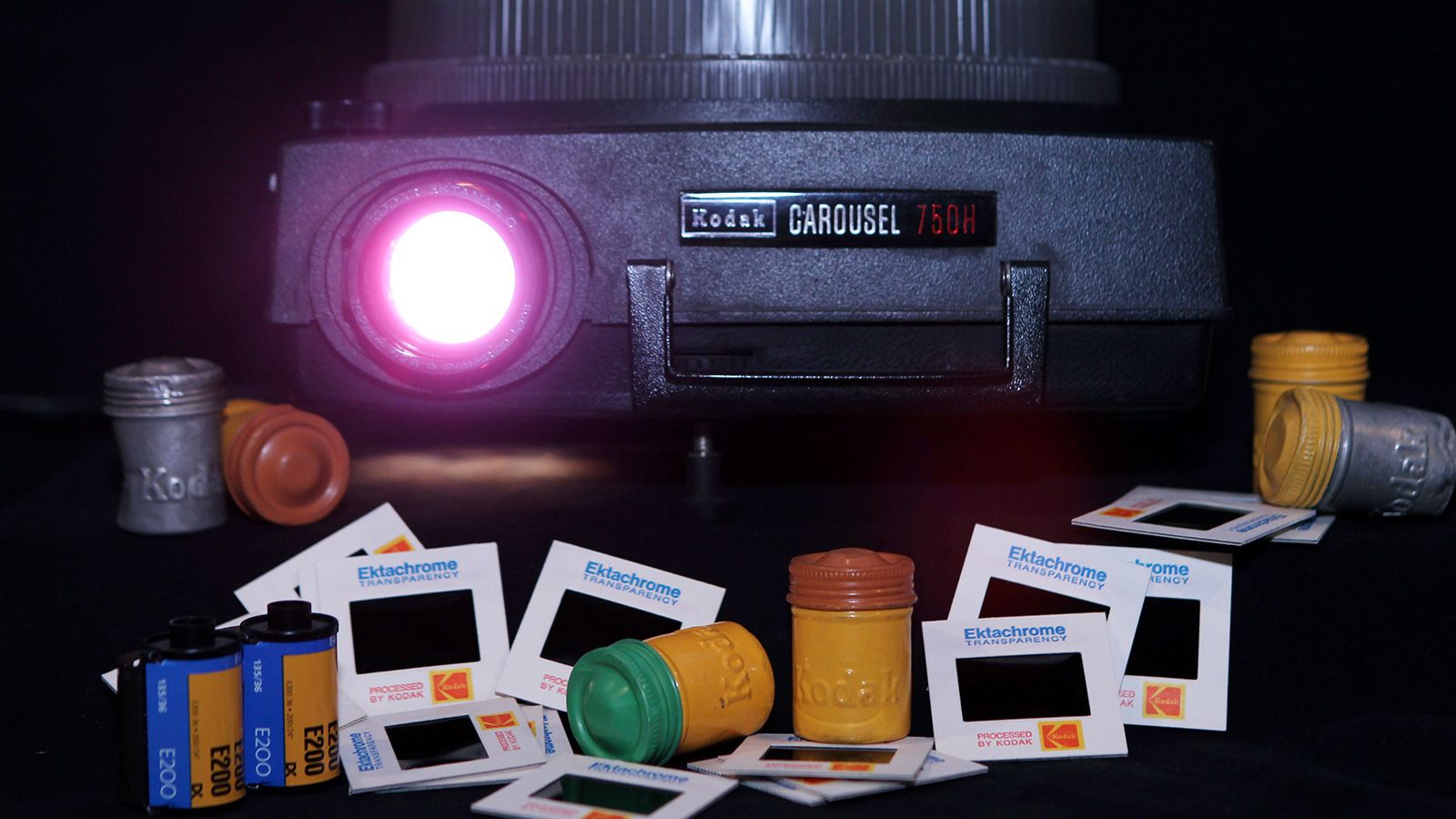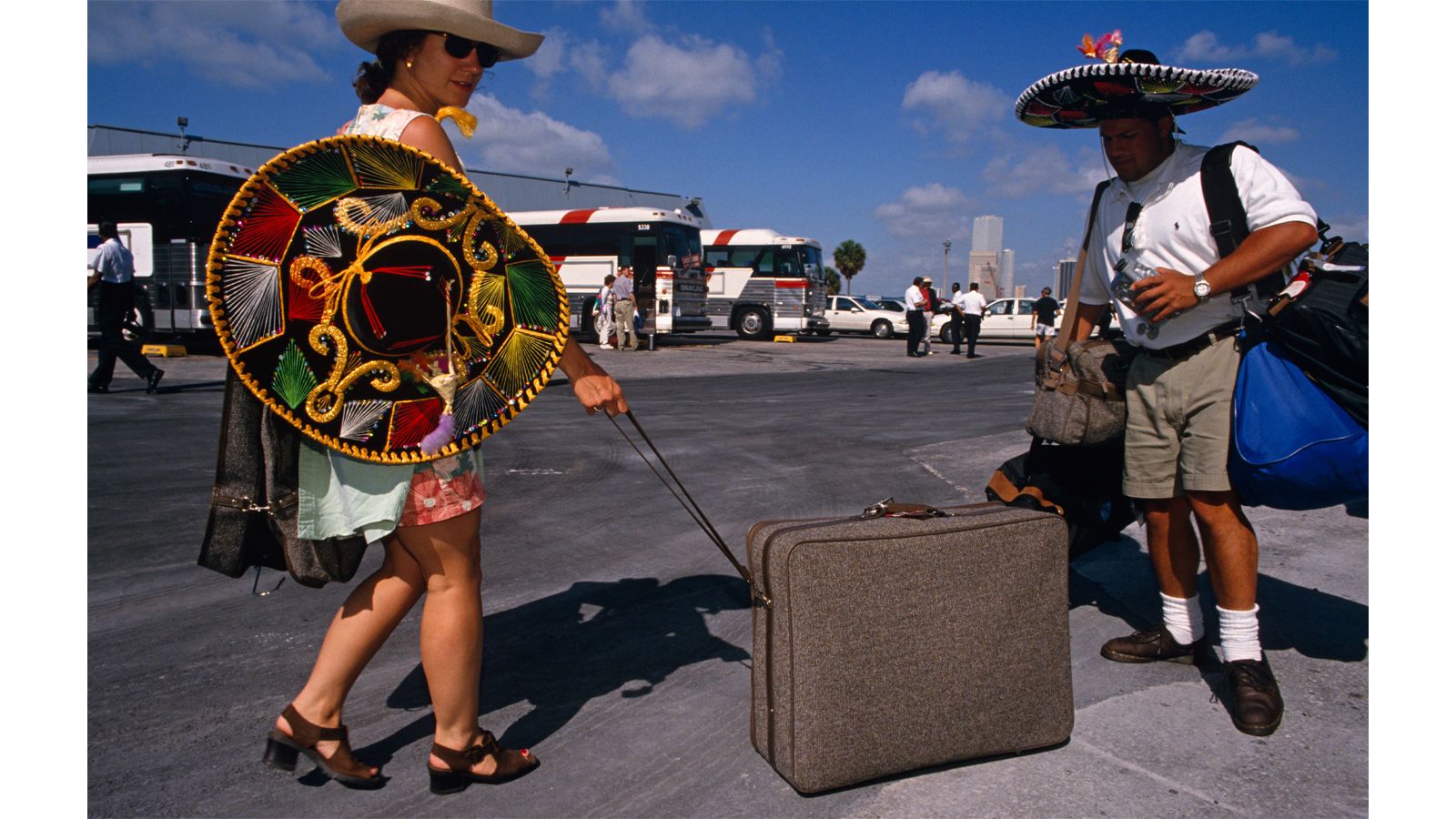Editor’s Note: Monthly Ticket is a CNN Travel series that spotlights some of the most fascinating topics in the travel world. In August, we’re going back in time to revisit some of the greatest retro travel experiences.
It’s your first time in Eastern Europe, you don’t speak the language, and you’ve no smartphone (or even cellphone). But you’re confident because you have a terrific guidebook to… Yugoslavia?
Your book’s so old, that’s not even a country anymore. You need to find a pay phone, but what country code is the US? And how much change does it take to make an international call?
Eight months later, you finally return home, vowing never to leave your zip code again.
For those who’ve only known the internet, it’s easy to imagine this is what sightseeing was like before it came along.
“The first thought people probably have is being amazed anyone was even able to travel a mile from home without Waze and Instagram,” muses Chuck Thompson, author of “To Hellholes and Back: Bribes, Lies, and the Art of Extreme Tourism.”
Yet people did travel before the internet.
Just ask Troy Haas, president and CEO of Brownell Travel for two decades and counting.
Founded in 1887, Brownell is the oldest travel agency in North America. Their longevity is all the more remarkable because they had to survive what Haas calls “a one/two punch – the reduction of airline commissions and the arrival of online travel agencies.”
Not to mention some additional body blows courtesy of Steve Jobs. For in 2007, Apple released the iPhone. And in 2008, they opened the App Store.
“A flood of technology was unleashed,” recalls Aron Ezra, chair and co-founder of the software company Plan A Technologies. At the time, he was still on his first startup, MacroView Labs. While today Plan A creates “complex custom software platforms and digital transformation solutions for all kinds of different organizations,” back then it was all about apps.
These included a couple offering “geo-targeted content for the Las Vegas area” that Ezra describes as being like “a virtual concierge.” Suddenly, a traveler had the ability to spend a day exploring the Strip and all the Long Island iced teas it has to offer, then take out their phone and instantly discover they could still get Cirque du Soleil tickets.
Life would never be the same.
In short: These times utterly transformed how we travel. (And how we live, period. If you had told someone in the 1980s there would come a time the average American spent over five hours a day on their phone, they would have said, “Five? I hang up after being on hold for two hours, tops.”)
This is how we trotted the globe pre-Internet. It wasn’t the most efficient approach. Then again, as we grow so swept up in Wordle we can barely bring ourselves to binge watch another season of the hottest new show, it’s not as if we’re models of productivity today either.
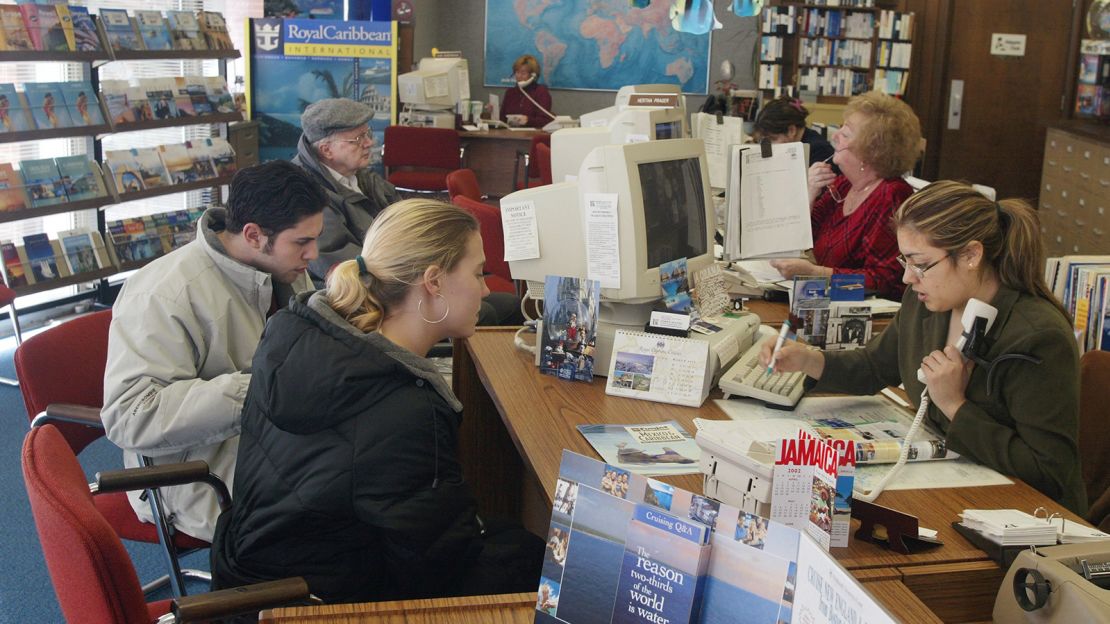
When it was so easy to go off the grid
Before the internet, if you told someone you would meet them at a certain place and time, you had to:
• Remember what the place was.
• Know how to get there.
• Show up roughly when you said you would.
It seems impossible, but it was real. This was our cruel world. For once the two of you left your respective landlines, you were both unreachable until that fateful meeting.
Was it an intense way to live? Absolutely. Yet there was a certain “que será, será” spirit as well. Because if something went wrong and you couldn’t get to that meeting… We understood it was easiest just to make a new friend.
Put yourself in that head space as we begin our travels.
The research
“I have lots of old envelopes stuffed in boxes in my basement with brochures and maps and information sheets sent to me by state parks in Wyoming, small towns in Italy, hotels on Malaysian islands, etc., in response to telephone and mail queries I sent them asking for pre-trip information,” Thompson says.
This was how you figured out what was out there. And once you chose one of those locations, you made damn sure you took its essential pamphlets with you.
Getting there
If you’ve watched the Keri Russell/Matthew Rhys series “The Americans,” you know their Russian spies have a cover career: They run Dupont Circle Travel.
Why? Because they need to go all over the place at weird hours to kill people and, in the ’80s, this was totally reasonable behavior for travel agents. (Maybe not the murders. Rest of it: normal.)
After all, if something went wrong on your trip, you didn’t have an Internet to save you. You just hoped your agency had your back, be it travel, KGB, or whoever else would accept a discount for AAA members.
Want a story of a travel agency coming through in a huge way? Haas has it: “In the 1930s, one of our agency owners, Jennie Brownell, was with a group of Americans on tour in Berlin the day America declared war on Germany! She had to change trains four times to get them home safely because each country would not let their trains cross the border and leave.”
And suddenly “saved me 12 bucks on my rental car rate” seems underwhelming.
Doing it on your own
Granted, not every travel agency offered Brownell’s Indiana Jones-type assistance. So how hard was it just to handle everything yourself back then?
Ezra has some insight. Over the years he’s built other forms of travel technology, including booking engines.
He deeply appreciates this innovation: “Before, you had to get on the phone with the hotel and talk through availability and prices and finally – if you found something that worked for you – read them your credit card information. The whole time you’re thinking, Should I make more calls to see if there’s a better deal out there? Or just take it, because if I let this room go and there isn’t anything else and when I call back they say, ‘Sorry, someone else booked it,’ I’ll have a breakdown.”
Being there
Has something been lost? Absolutely. Haas puts it this way: “Some of the wonder of travel, mainly because top destinations suffer from tourism and issues like ‘selfies.’”
Thompson is more blunt: “There were fewer people about, that’s for damn sure, and that made things a lot easier and a lot more civil.”
They also agree there was more of a feeling of discovery, because when you visited a place it was probably the first time you were seeing it in motion. (Those guidebooks you lugged along had photos. Embedded videos? Not so much.)
The more things change…
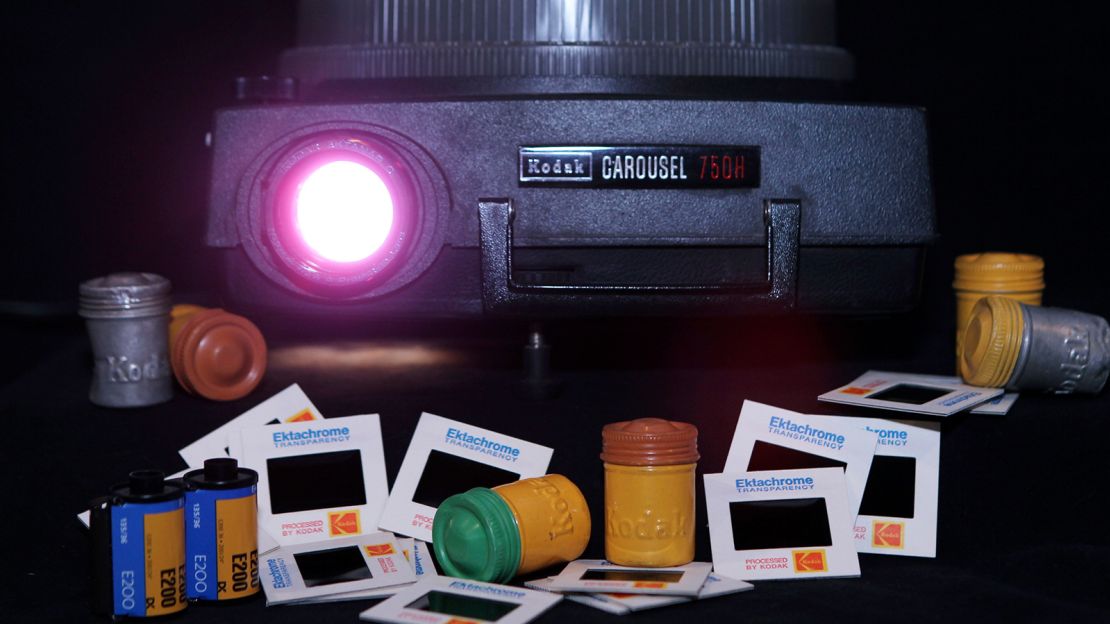
Thompson says today’s social media trip documentation can be off-putting, but it’s hardly new.
Back in the day, there were slide shows. And they were rough.
“‘My best life’ travel pics on social has gotten kind of obnoxious, but so was listening to somebody drone on about their life-changing trip to Europe while not advancing quickly enough to the 14th overexposed slide of a Gothic cathedral while you entered your second hour on a mushy couch feigning interest.”
Likewise, Haas says Brownell has survived when so many travel agencies slipped under because they’ve always stayed true to their mission of being “advisors who create exceptional travel experience.” (As opposed to just guys telling you Delta has a 7:30 p.m. flight but not the usual 8:15 on Thursday.)
Then again, some things are genuinely different, in ways for which we should be grateful.
“Early in my career – in the time before widespread internet – I used to have to travel more days than I was home,” Ezra reminisces. “Once I was sent to Brazil at the last-minute to attend a meeting. It was conducted entirely in Portuguese. I am deeply grateful to live at a moment when a translation app is a download away.”



